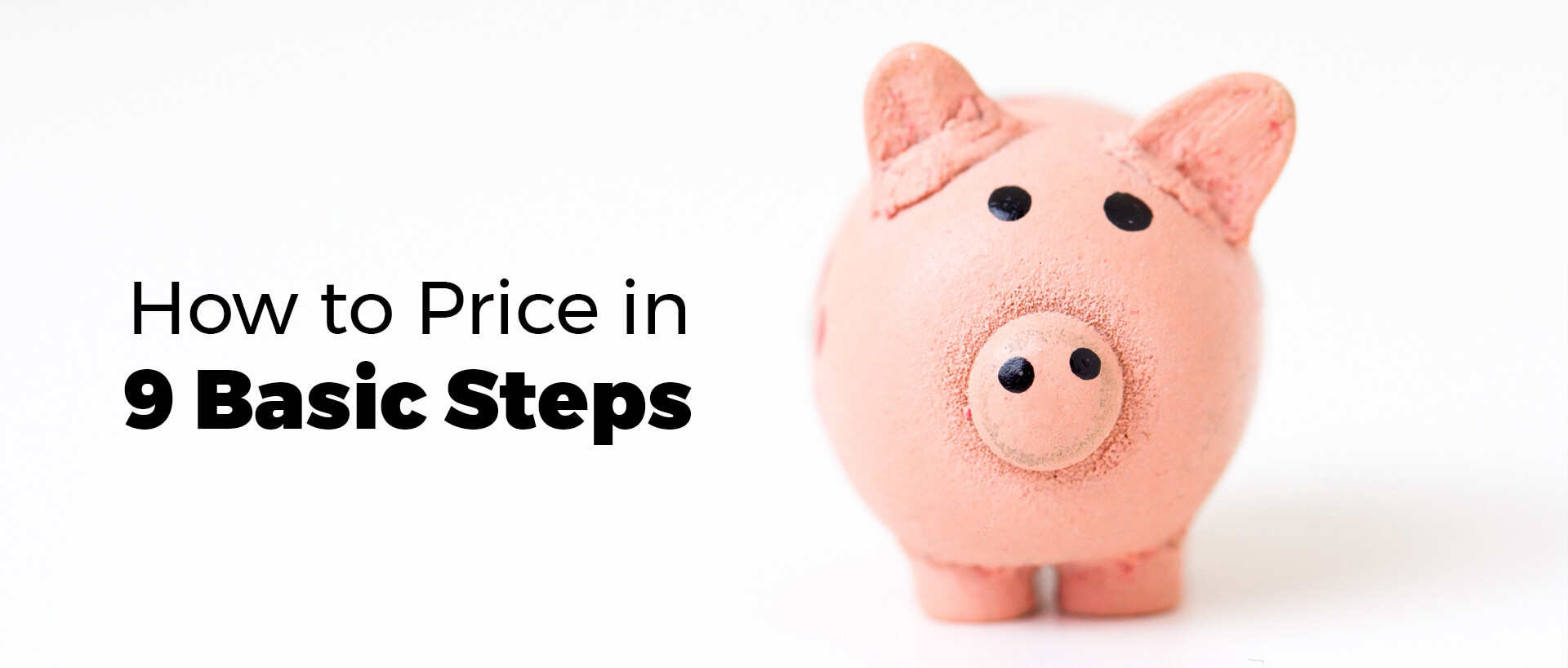Pricing can be one of the most difficult aspects of marketing any business. That’s because asking for any amount of money is both an art and a science, and one for which good training and information is often hard to find. We hope you’ll find this short primer helpful. Here are 9 basic steps to follow when considering how to price your good or services:
1. Study your competitors. You’ll need to know what they are charging, even if it means spending your money there. You will also need to examine their product/service quality against yours. Chart out the quality and pricing on a grid to see how your offerings compare.
2. Consider your competitors’ target markets vs. your own. Do your target customers have deeper or shallower pockets than your competitors’ target customers? If deeper, you can go higher, if lower, you may need to aim below your competitors.
3. Consider your costs. Assess all your costs, including sales time, overhead, etc., and obviously the costs to purchase/process materials to create the product. Typically, you will want to charge cost times 2 – 10 (if you can justify it) to be your price. This will vary greatly by industry.
4. Set a rough price as a starting point. If your product or service lasts twice as long, or is twice as good as a well-known competitor, then in theory, you can justify charging twice the price. You may want to offer slightly less than a double though…to give better value. Never believe that because you are small, or new, that you must be cheaper. You will only be shooting yourself in the foot – by having no cash left over to expand. Always make a near-linear relationship between price and quality. People expect to pay more for a better service or product. Remember it is critical to point out the product/service’s points of differentiation clearly on the packaging or sales material – so that people will understand why the price is higher or lower. (Note: A higher price makes people ask “What’s better about this one?” A lower price makes them question, “What might be wrong with this?” If you’re cheaper, make it clear how the product has been “simplified”)
5. Examine value. Once you have a rough price, examine the dollar value your product or service provides (if this is applicable to your products.) How much, financially, can the customer save or earn, by using your product or service? Is it a sure-thing, or a hopeful-thing? If it’s a very sure thing, you could charge up to 25% (or more) of the dollar value you provide. If it’s iffy, come down to 5 – 10%. This number may be significantly different than how your competitors are charging. If this is the case, and especially if it is much higher, you should seriously consider a strong marketing program to dramatically differentiate you from competitors…i.e. demonstrate that you are in a “whole other league” of your own. It is much better than holding back your price. This is where you’ll need to make a serious strategic decision…and it is up to you how bold you are able to be.
6. Consider bundling. Rather than let the customer choose the services they want, and reject others, bundle a program that is sure to succeed in fulfilling their needs well. That way, the value provided will increase, and your dollar value charged can increase, too. It is much more efficient to make a $5000 sale, than a $500 sale.
7. Try to get away from hourly. If you’re thinking of billing by hourly rate, reconsider. Unless the project is riddled with uncertainty, you can probably do a lot better by giving a project fee for the whole value you provide. Isolate out only the uncertain areas, and place hourly rates, or bracketed ranges of total fees, on these areas. If you must bill by the hour, take what you’ll pay the labour (including benefits) and multiply by 2.5 – 3 times to get your billing rate. This will ensure you have enough to cover overhead, and leave some profit in the business.
8. Pick a number. A price that appears just below a big round number looks as though it’s already been discounted. Instead of $10.00, try $9.99. It gives people the impression that you’ve made it as low as you could. It might not be a good technique for high-end products and services, however — as appearing discounted cheapens the impression. So, if you aren’t concerned about the price appearing too high, then use whatever numbers you wish.
9. Should you offer a discount? When considering volume discounts, refer to your suppliers – use the points where they give you price breaks as their client to provide your own volume breaks. If there are none, then you shouldn’t offer volume discounts either. Volume discounts should only be given when there is a real cost reduction in the business.
With all this in mind, be certain to have your marketing “ducks in a row.” That is, be able to show the value you are providing, and make the product’s appearance and marketing match its price. If you are pricing high, you’d better look the part. If you’re pricing low, everything had better look efficient and no-frills. Practice explaining your price to your staff, partners, associates, friends, or family – see if they believe the numbers makes sense. If so, you’re there. If not, find out why – is it how you sell it? Is it because you seem unsure? Practice it until you feel solid, and fair about presenting it, and until those listening feel convinced. And if you need more help on selling or presenting a price, give us a call…we’re here to help!


